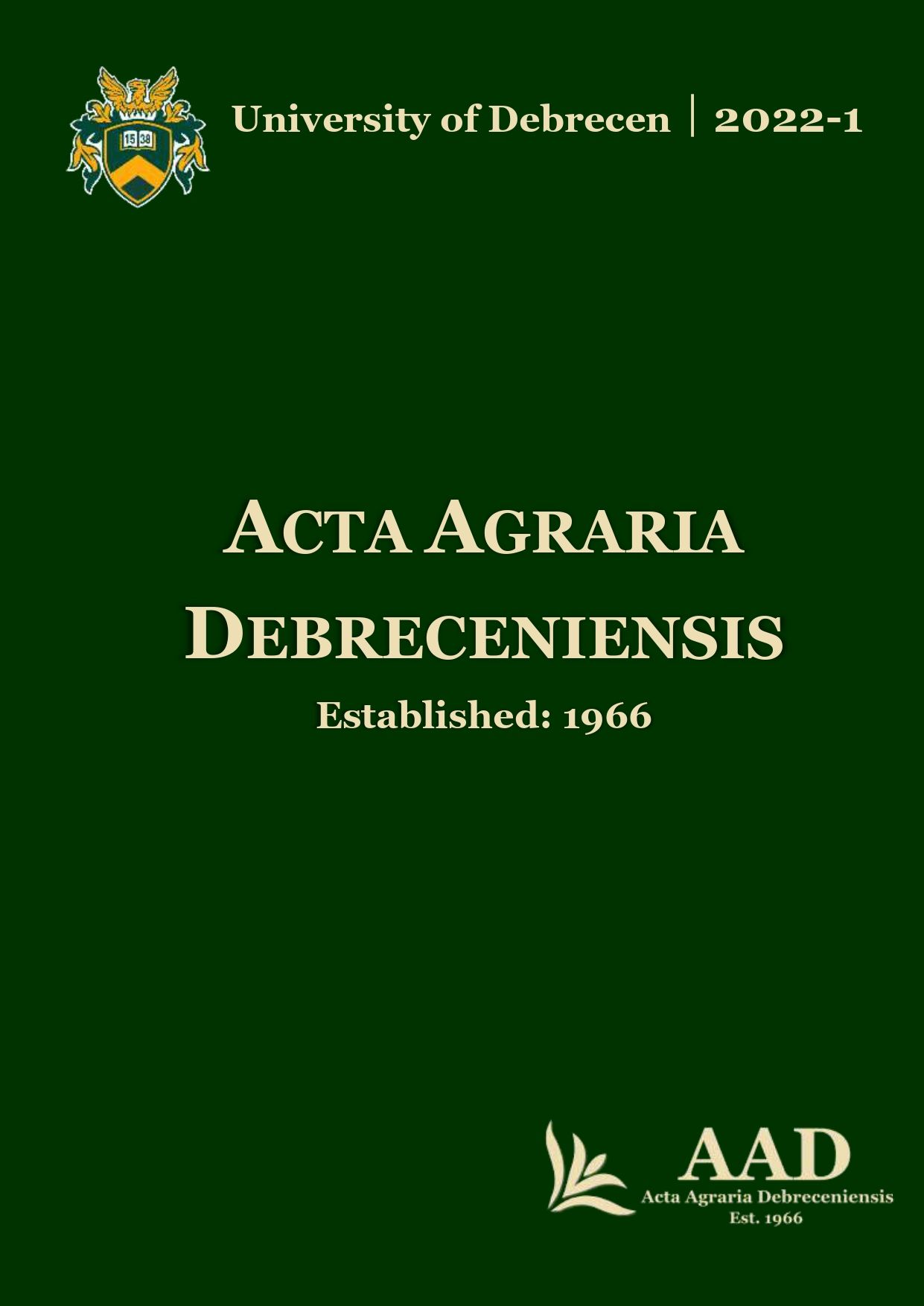Characterisation of basic water balance parameters of Debrecen
Authors
View
Keywords
License
Copyright (c) 2022 by the Author(s)

This work is licensed under a Creative Commons Attribution 4.0 International License.
How To Cite
Accepted 2022-04-27
Published 2022-05-26
Abstract
This work aims to develop a hydrological modelling tool to help managers make the right decisions for Debrecen, in the face of water scarcity and the increase in agricultural and domestic needs over time. The methodology was based on the creation of a climatic database, at monthly time steps, from 2016 to 2019, and cartographic (land use, digital elevation model, and hydrological network). As a next step, the watershed was delimitated into sub-basins to determine the shape and the physiographic characteristics of sub-watersheds. Finally, a hydrological study was prepared by calculating the time of concentration to build a database of water resources in the study area. This water resource will be used as an input parameter for urban farming.
References
- Brown, S.A.–Stein, S.M.–Warner, J.C. (1996): Urban Drainage Design Manual. Hydraulic Engineering Circular 22, FHWA-SA-96-078, Federal Highway Administration, U.S. Department of Transportation Washington, DC, 478p.
- Buyantuyev, A.–Wu, J.G.–Gries, C. (2010): Multiscale analysis of the urbanization pattern of the Phoenix metropolitan landscape of USA: Time, space, and thematic resolution. Landscape and Urban Planning 94(3–4): 206–217
- De Walle, D.R.–Swistock, B.R.–Johnson, T.E.–McGuire, K.J. (2000): Potential effects of climate change and urbanization on mean annual streamflow in the United States. Water Resources Research 36(9): 2655–2664.
- Edris, T.S.–Majid, H.–Arash, M. (2016): Estimating time of concentration in large watersheds: Article in Paddy and Water Environment June 2016
- Goudet, J.L (2011): L’eau, première cause de mortalité dans le monde. Futura-Sciences.
- Gravelius, H. (1914): Grundriss der gesamten Gewasserkunde, Band 1: Flusskunde. Compendium of Hydrology, I, 265–278. https://www.fhwa.dot.gov/engineering/hydraulics/pubs/10009/10009.pdf
- I1: https://power.larc.nasa.gov/data-access-viewer/
- I2:https://www.weather-atlas.com/en/hungary/debrecen-climate#temperature
- I3:https://www.met.hu/eghajlat/magyarorszag_eghajlata/eghajlati_adatsorok/Debrecen/adatok/napi_adatok/index.php
- Muzy, A. (2005): Cours hydrologie générale destiné aux étudiants de la section SIE et GC
- Rees, H.G.–Holmes, M.G.R.–Free, M.J.–Young, A.R.–Piston, D.G.–Kansakar, S.R. (2006): An integrated Water resources management tool for Himalayan region. p. 1001–1012.
- Refsgaard, J. (1997): Parametrisation, calibration, and validation of distributed hydrological models. Journal of Hydrology 198: 69–97.
- Shinde, P.G. (2005): Water scenario 2025. National Level Conference on Water Management Scenario 2025 Problems, Issues and Challenges, January 21, 2005. India.
- Tamás, J.–Nagy, A.–Buday-Bódi, E.–Gálya, B.–Nistor, S.–Fehér, J. (2019): Guideline - Application of the Process Oriented Spatial Decision Support Tools: Methods in Urban Hydrology for Middle-Sized Cities in CEE Based on the Reference Sites. University of Debrecen, Debrecen 93. ISBN 978-963-490-162-4
- Timothée, S.-S.–Rodolphe, C.–Matthieu, F. (2018): The shape of watersheds. Nature Communications volume 9, Article number: 3791 (2018)
- Welle, P.I.–Woodward, D. (1986): Engineering hydrology-time of concentration. Technical note 4, US Department of Agriculture, Soil Conservation Service, Pennsylvania.
- Zhang, X.H.–Zhang, H.W.–Chen, B.–Qchen, G.–Zhao, X.H. (2008): Water resources planning based on complex system dynamics: A case study of tianj in city. p 2328–2336.

 https://doi.org/10.34101/actaagrar/1/10427
https://doi.org/10.34101/actaagrar/1/10427